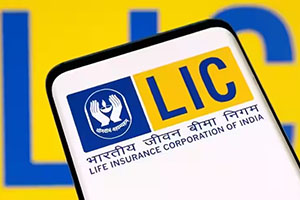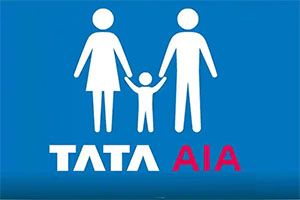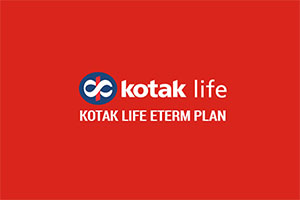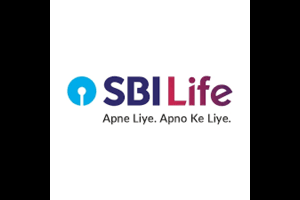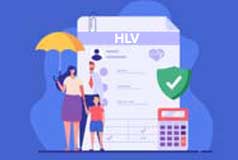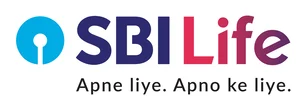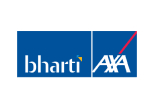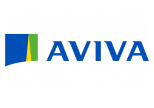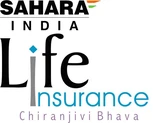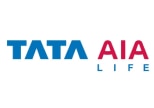NPS Vatsalya Scheme: Everything You Need to Know
The National Pension Scheme (NPS) seeks to benefit citizens of all ages. Its new initiative, the NPS Vatsalya Scheme, is designed to secure the future of minors. The scheme has already enrolled 75,000 subscribers since its launch in September 2024. The total number of customers of NPS and Atal Pension Yojana at present is more than 8 Crore, and the overall Assets Under Management (AUM) under NPS is about Rs.14 Lakh Crore. This massive investment base significantly drives the country's long-term economic growth. The AUM is expected to reach Rs.15 Lakh Crore by the end of the financial year 2024-25.
In today's uncertain times, securing a financially stable future for the child is more important than ever. The NPS Vatsalya Scheme offers parents the opportunity to open a pension account for their minor child. This ensures not only financial stability in the retired life of a child but also inculcates early financial discipline. By preparing children for a secure future, the scheme addresses the growing need for reliable financial planning tools.

Introduction to the NPS Vatsalya Scheme
Under the NPS Vatsalya Scheme, parents/guardians can open an NPS account in the name of a minor child and contribute on a fixed monthly or yearly basis over time until the child turns 18. For the contribution requirements of the Vatsalya scheme, there's a minimum of Rs. 1,000 per annum required to be contributed but no maximum, which means investments can be tailored by families.
The NPS Vatsalya Scheme is an online, PFRDA-managed version of the NPS, which means a much more youthful, contemporary approach to its intended purposes. It's meant to extend the sustenance period for today's younger generation in conjunction with fostering a financially responsible mentality. Therefore, being able to access an account in this manner offers a very early staggered approach to retirement. This scheme falls under the entire NPS project launched by the Central Government for a guaranteed pension in one's old age.
Overview of the Scheme
|
Details |
Scheme |
|
Contribution |
Account Opening Contribution: Minimum Rs.1,000; no maximum limit. Subsequent Contribution: Minimum Rs.1,000 per year; no maximum limit. |
|
Pension Fund Selection |
Guardian can select any one of the Pension Funds registered with PFRDA. |
|
Partial Withdrawal |
Up to 25% of the contributed amount can be withdrawn. |
|
Exit Option |
Available when the minor attains 18 years. |
|
Withdrawal Upon Exit |
20% of the corpus can be withdrawn as a lump sum; 80% must be reinvested in an annuity plan. |
|
Interest Rate |
Between 9.5% to 10% |
Objectives and Purpose
The primary aims and goals of the NPS Vatsalya Scheme are mentioned below:
Objectives
- Encourage Early Savings: To inculcate the habit of saving and investing for the future of minors.
- Secure Children's Future: To provide a secured financial future for children and help them build a corpus for retirement.
- Financial Discipline: To instill financial discipline among parents and guardians in planning and saving for their children's future.
- Social Security: To provide a social safety net for minors to guarantee that they have a means of economic support in the future.
Purpose
- Long-term Savings: To encourage long-term savings and investment for the benefit of minors.
- Retirement Planning: To help minors build a retirement corpus, ensuring they have a secure financial future.
- Financial Inclusion: To foster financial inclusion, our organization encourages parents and guardians across all income groups to save and invest in their children's future.
Eligibility Criteria
Following are the norms that have to be fulfilled for one to be enrolled in the NPS Vatsalya Scheme.
Vatsalya scheme.
- The minor should be a citizen of India.
- The minor should be less than 18 years of age.
- Parents or legal guardians can open an NPS Vatsalya account on behalf of the minor.
- A minor may have only one NPS Vatsalya account.
However, these are the eligibility criteria that are subject to change; hence, it's always better to consult with the PFRDA or any financial adviser for the latest.
Who Can Enroll?
The following individuals can enroll in the NPS Vatsalya scheme:
- Parents: Biological or adoptive parents can enroll their minor child in the NPS Vatsalya scheme.
- Legal Guardians: In the absence of parents, legal guardians can enroll the minor in the scheme.
Role of Parents and Guardians
Hеrе arе particular kеy rеsponsibilitiеs.
- Opening the Account: Thе NPS Vatsalya account can be opеnеd by a parеnt/lеgal dеfеndеr as an undеrsignеd in favor of a minor.
- Contributions: The contribution by a parent/ legal guardian will be made through his/her PAN. The minimum contribution will be converted to a pension fund.
- Investment Choices: The investment options decided by the parent/legal guardian on whether the fund will be contributed by equities/corporate debt/government bonds etc. will be continued.
- Nomination: Parents/legal guardians can nominate a person who will be entitled to the corpus in the eventuality of the death of the minor.
- Account Management: The account will be managed by the parent/legal guardian in order to view the investment portfolio, make changes, etc.
- Account Transfer: Once the minor turns 18, the account will be transferred to their name, and they will become the account holder.
Key Features of NPS Vatsalya
This scheme involves multiple features that maximize its importance. Here are some of them:
Contribution Requirements
- Minimum Contribution: Participants can start contributing to the NPS scheme with just Rs.1,000 per annum.
- Frequency of Contributions: Contributions can be made monthly, quarterly, half-yearly, or annually.
- Maximum Contribution: There’s no maximum limit on contributions.
Investment Options
- Pension Fund Managers: Contributions to the NPS are professionally managed by registered Pension Fund Managers (PFMs). The PFRDA authorizes these fund managers, who make investment decisions intending to maximize returns at the lowest possible risk. Their expertise ensures transparent and efficient management of the funds, giving the subscribers confidence that their investments are secure and growing.
- Asset Classes: The NPS is based on the concept of spreading investments across different classes of assets—equities to get high returns, corporate bonds to spread moderate risk and give reasonable returns, and government securities that have low risk with a stable pattern of returns. The diversified portfolio ensures a balance between risk and returns, serving varied financial goals and risk appetites of the subscribers.
- Default, Auto, and Active Choice: Subscribers can choose how their money is invested with various allocation options. The Default Choice automatically invests contributions according to pre-set criteria. Auto Choice dynamically adjusts investments, allocating a higher percentage to equities in the earlier years and gradually increasing the proportion of bonds and government securities as the subscriber grows older. Alternatively, under Active Choice, one has complete control over the asset allocation and hence can decide the percentage of funds to be invested in each asset class according to one's preferences and financial goals.
|
Equity Allocation |
Description |
|
|
Default Choice |
50% |
Moderate Life Cycle Fund (LC-50) - Automatically chosen if no other option is selected |
|
Auto Choice |
75% |
Aggressive (LC-75) |
|
50% |
Moderate (LC-50) |
|
|
25% |
Conservative (LC-25) |
|
|
Active Choice |
Up to 75% |
Equity |
|
Up to 100% |
Corporate Debt |
|
|
Up to 100% |
Government Securities |
|
|
Up to 5% |
Alternate Assets |
Account Management Until Majority
- Parent/Guardian as Account Holder: Until the minor attains majority (18 years), the parent or guardian will be the account holder.
- Account Management: The parent or guardian will manage the account, including monitoring investments and making changes as needed.
- Transfer of Account: Once the minor attains majority, the account will be transferred to their name, and they will become the account holder.
Benefits of the Scheme
Here are the details about the NPS scheme benefits.
1. Financial Security for Minors
NPS Vatsalya is a savings scheme for minors aiming to offer them a secure economic future mainly designed to permit long-term savings at a young age for their future. The faster you start the simpler it will be to collect a corpus over time, which allows you to ultimately lead to a financially steady adulthood.
2. Tax Implications
Contributions made under this scheme are deductible under NPS under Section 80C of the Income Tax Act, 1961. This reduces the taxable income substantially and at the same time generates a corpus of fit for the child’s future through disciplined budgeting
3. Flexibility in Contributions
The scheme offers the flexibility of contributing in line with one's economic capability. A low minimal contribution requirement of Rs.1,000 in 12 months and no higher cap restriction make the circle of relatives easily alter their financial savings method, considering current and future requirements.
How to Open an NPS Vatsalya Account?
Below are the key steps that must be followed to complete the registration process under the NPS Vatsalya Scheme seamlessly. Doing so will allow participants to receive NPS scheme benefits without any complications.
Online Registration Process
- Visit the eNPS Website: Go to the official eNPS website and click on "Registration".
- Fill in the Application Form: Fill in the online application form with the required details, including the minor's name, date of birth, and guardian's details.
- Upload Required Documents: Upload the required documents.
- Make the Initial Contribution: Make the initial contribution using a debit/credit card or net banking.
- Submit the Application: Submit the application and take a printout of the acknowledgment receipt.
Required Documentation
- Minor's birth certificate
- Guardian's ID proof such as an Aadhaar card, PAN card, or passport
- Address proof such as utility bills or bank statements.
- KYC documents of the guardian, if not already registered with the NSDL
Offline Enrollment Options
- Visit a POP-SP: Visit a Point of Presence-Service Provider (POP-SP) or an authorized branch of a bank that offers NPS services.
- Fill in the Application Form: Fill in the application form and submit it along with the required documents.
- Make the Initial Contribution: Make the initial contribution using cash, debit/credit card, or net banking.
- Get the PRAN: Get the Permanent Retirement Account Number (PRAN) and a welcome kit from the POP-SP.
Transition Upon Attaining Majority
1. Seamless Conversion to Regular NPS Account
When the minor attains the age of 18 years, his/her NPS Vatsalya account is routinely transformed into an NPS Tier-I account under the All Citizen Model. This offers continuity of savings without commencing a new account.
2. Account Management Post-18 Years
Within 3 months of reaching the age of 18 years, the account holder ought to undergo a brand new KYC technique. On transition, the account will have all the functions and benefits of a ordinary NPS Tier-I account in phrases of flexibility in contributions, investment picks, and withdrawal alternatives, allowing the individual to control their retirement savings independently.
Withdrawal and Exit Options
The NPS Vatsalya scheme offers flexible withdrawal and exit options to subscribers. Here are the details:
1. Partial Withdrawal Rules
- Eligibility: Partial withdrawals are allowed after the minor turns 18.
- Purpose: Partial withdrawals can be made for specific purposes, such as higher education, marriage, or medical treatment.
- Limit: Up to 25% of the corpus can be withdrawn as a lump sum.
- Frequency: A maximum of three partial withdrawals are allowed during the entire tenure of the scheme.
2. Exit Procedures Before 18 Years
- Premature Exit: In case of the minor's demise, the guardian can withdraw the entire corpus.
- Withdrawal by Guardian: The guardian can withdraw up to 25% of the corpus for specific purposes, such as medical treatment or education.
3. Exit Procedures After 18 Years
- Normal Exit: On attaining 18 years, the minor can exit the scheme and withdraw the entire corpus.
- Deferred Withdrawal: The minor can defer the withdrawal up to a maximum of 10 years from the date of attaining 18 years.
- Annuity Purchase: At least 80% of the corpus must be used to purchase an annuity from an empaneled annuity service provider.
It's essential to note that the withdrawal and exit rules may be subject to change, and subscribers should check with the PFRDA or a financial advisor for the latest information.
Frequently Asked Questions (FAQs)
Ques 1. What is NPS Vatsalya?
Ans. NPS Vatsalya is a contributory pension machine under the National Pension System (NPS), designed to create a pensioned society and encourage saving for retirement from an early age.
Ques 2. Who is eligible to join NPS Vatsalya?
Ans. Minors citizens beneath 18 years, inclusive of Non-Resident Indian (NRI) and Overseas Citizenship of India (OCI) individuals, are eligible for the NPS Vatsalya Scheme.
Ques 3. How do I open an NPS Vatsalya account?
Ans. You can open an NPS Vatsalya account online using the eNPS website or by visiting points of presence (POPs) like India Post, and major banks.
Ques 4. What are the investment options available in NPS Vatsalya?
Ans. NPS Vatsalya offers 3 funding options: Default choice (moderate lifecycle fund - LC-50), auto choice (aggressive, moderate, or conservative lifecycle funds), and active choice (allocation of funds throughout equity, corporate debt, authorities securities, and trade assets).
Ques 5. Can I withdraw money from my NPS Vatsalya account?
Ans. Partial withdrawals are allowed after the minor turns 18.
Ques 6. Is NPS Vatsalya a tax-saving scheme?
Ans. Yes, contributions to NPS Vatsalya are eligible for tax deductions under Section 80C of the Income Tax Act.
Ques 7. Can I change my investment option or portfolio manager?
Ans. Yes, you can change your investment option or portfolio manager once a year.
Ques 8. How do I track my NPS Vatsalya account?
Ans. You can track your NPS Vatsalya account online through the eNPS website or the NSDL website.
Ques 9. What are the withdrawal and exit rules?
Ans. Partial withdrawals are allowed after 3 years of joining, up to 25% of the contributed amount, for specific purposes like education or medical treatment. Upon attaining 18 years, the account can be exited, with at least 80% of the corpus to be re-invested into an annuity plan.
Ques 10. What are the benefits of NPS Vatsalya?
Ans. NPS scheme benefits include savings habits, financial planning, and discipline from an early age. It provides a head start on saving for retirement and offers valuable financial lessons.















